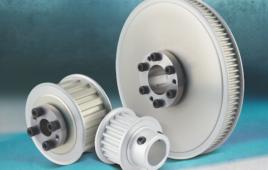 Back pain is one of the leading causes of sick leave in Germany — often caused by lack of exercise, work stress, and obesity. Other causes include osteoporosis, chronic inflammatory diseases, or spinal deformities such as scoliosis. Innovative systems for 4D measurement of body statics can be used for precise diagnosis. DIERS International GmbH enables fast and high-resolution optical measurement of the back, spine, and pelvis with DIERS formetric 4D. A dynamic version and additional modules for determining the mobility of the cervical spine or gait analysis and leg axis measurement make the system a compact movement analysis laboratory. Up to 5 camera units are integrated and equipped with uEye industrial cameras from IDS Imaging Development Systems GmbH.
Back pain is one of the leading causes of sick leave in Germany — often caused by lack of exercise, work stress, and obesity. Other causes include osteoporosis, chronic inflammatory diseases, or spinal deformities such as scoliosis. Innovative systems for 4D measurement of body statics can be used for precise diagnosis. DIERS International GmbH enables fast and high-resolution optical measurement of the back, spine, and pelvis with DIERS formetric 4D. A dynamic version and additional modules for determining the mobility of the cervical spine or gait analysis and leg axis measurement make the system a compact movement analysis laboratory. Up to 5 camera units are integrated and equipped with uEye industrial cameras from IDS Imaging Development Systems GmbH.
Application
DIERS formetric surveying technology is physically based on the principle of triangulation. A light projector casts a grid of lines onto the patient’s back, which is recorded by a camera unit. Computer software analyses the line curvatures and generates a three-dimensional image of the surface using photogrammetry (image measurement), similar to a virtual plaster cast. The examination is quick, radiation-free, and contactless.

Holistic movement analysis at a running speed of up to 30 km/h.
Additional components for a holistic movement analysis
To carry out examinations in motion, the company also has a dynamic version of the DIERS formetric system in its range — DIERS 4D motion. The patient runs on a treadmill, using the latest projection and camera technology (60 images per second) and specially developed software; the complex interaction of the spine and pelvis are measured during walking and displayed in moving images. This enables an analysis of the vertebral body rotation and the creation of movement models of the spine.
Additional modules increase the range of applications up to a compact motion analysis laboratory. With optional camera modules DIERS leg axis posterior and lateral for video-based analysis of the leg axis geometry, for example, asymmetries in stance and in the movement sequence can be determined and documented. The system software detects reflective markers applied to the patient and calculates movement patterns (dynamic) and angles (static and dynamic). In the case of foot and posture corrections, the effects on the leg axes can thus be directly displayed and checked.
With the additional module “Cervical Spine,” the mobility of the cervical spine can also be recorded three-dimensionally. The measurement data and asymmetries are displayed graphically and can be analyzed. The measurement process takes place using a special head hood. The DIERS formetric 4D system requires an additional camera system for the Cervical Spine Module.
With the integration of these and other measurement systems, it is possible for the first time to view the complex biomechanical interaction in the human musculoskeletal system holistically. The spectrum of uses ranges from medical diagnosis to training therapy and sports science. It detects scoliosis, pelvic obliquity, and rotation, progress controls in osteoporosis and arthrosis, neurological examinations (e.g,. Romberg test), posture tests, (Matthiass test, Flamingo test), and much more. Up to 5 uEye CP industrial cameras from IDS are used per unit.
 Up to 5 uEye cameras per unit in use
Up to 5 uEye cameras per unit in use
The uEye CP stands for “Compact Power” and is suitable for all kinds of industrial applications with its high level of functionality with comprehensive pixel pre-processing and its size of only 29 x 29 x 29 mm. The internal 120 MB image memory for buffering image sequences also qualifies it for multi-camera systems. The USB 3.0 cameras enable a data rate of 420 MByte/s, low CPU load, and easy integration. Users can choose from many modern CMOS sensors from Sony, CMOSIS, e2v, and ON Semiconductor, with a range of resolutions.
The model UI-3040CP-M-GL Rev. 2 enables strong image quality even in low light or when shooting fast-moving subjects. The integrated IMX273 global shutter CMOS sensor from Sony’s Pregius range scores particularly well for its image quality, high sensitivity, and wide dynamic range. With a resolution of 1.57 MPixel (1448 x 1086 px) at 3.45 μm pixels, it achieves an impressive 243 fps. This makes the camera suitable for classic industrial applications like surface inspection but also for detailed image evaluation in medical technology.
The UI-3240CP-M-GL Rev.2 is a powerful industrial camera with the e2v 1.3 megapixel CMOS sensor. This sensor is one of the most sensitive sensors in the IDS portfolio. Besides its outstanding light sensitivity, the camera is distinguished by several additional functions — for example, the sensor offers two global and rolling shutter variants that can be switched during operation, thus providing maximum flexibility for changing requirements and environmental conditions.
Outlook
The medical technology market is highly regulated, so changes and new developments of products must be well-considered through elaborate certification and approval procedures. At the same time, price pressure is increasing. Nevertheless, DIERS is currently working on various new developments — from insole production to research projects in the rehabilitation and care sector. In addition to classic 2D industrial cameras, 3D models are also conceivable, which inherently introduce the spatial component.
Filed Under: Uncategorized




